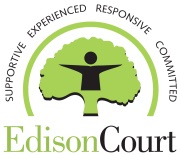Reports indicate that LGBTQ youth are vastly overrepresented in the juvenile justice system. Although LGBTQ youth comprise 7 to 9 percent of youth generally nationwide, they represent 20 percent of all youth in juvenile justice facilities — including 40 percent of girls in detention facilities (Wilber and Bilchik, 2017).
One teens story highlights the issues LGBTQ teens face in our system.. “If someone had just asked, things might have been different,” said Mateo, a closeted, gay, gang-involved teenager in juvenile detention for committing a hate crime against a gay person. Mateo (pseudonym used to protect confidentiality) had committed a robbery at gunpoint outside a gay bar while shouting homophobic slurs at his victim.
The offense was the culmination of a pattern of escalating substance abuse and anger. Mateo had been self-medicating and acting out since coming out to his parents at age 11, an experience that left him feeling rejected and alone. He internalized his parents’ disapproval and carefully guarded this secret.
Mateo’s despair and isolation only deepened after his arrest. He described a detention facility in which staff generally assumed that youth were straight and in which homophobia, biphobia and transphobia were rampant. Because of the nature of his offense and his gender-conforming presentation, the detention staff felt freer to use anti-LGBTQ slurs and jokes in his presence.
Staff did not intervene when youth openly bullied and harassed anyone whom they perceived to be gay. In fact, the staff blamed victimized youth for “flaunting” their identity. Mateo retreated further into the closet, perceiving no safe option in which he could embrace his sexual orientation.
The probation agency had formal guidance for staff on how to promote the safety and well-being of LGBTQ youth, but staff members’ implicit bias about LGBTQ youth made them unable to recognize Mateo’s struggles. The primary source of his turmoil remained invisible to the adults entrusted with his care, and they missed a critical opportunity to help him.
Lack of staff training focused on LGBTQ youth contributes to their increased harm in detention centers and treatment programs. They can suffer sexual and physical assault, longer lengths of stay and additional charges for self-defense, as well as increased trauma and psychological harm (Wilber and Bilchick, 2017). To improve outcomes for LGBTQ youth, juvenile justice stakeholders and their partners must have targeted training on sexual orientation and gender identity based on accurate social science research, policies and procedures that create a fair and affirming system for all youth, and the legal and professional standards governing services to system-involved LGBTQ youth.
Youth at Mathom House participate in an on campus Gay-Straight Alliance. The well attended meetings create dialogue and understanding. A program advisor commented that “ about 80 percent of our residents attend and open discussion helps break down any stigma and allows youth to process their feelings frankly. Equally as important is the idea that our staff participate and they challenge their own ideas and beliefs”.
By strengthening our service delivery teams, we can create environments for young people in which they feel comfortable and open about who they are and in which they can receive the support and services they need to thrive. And if we can do that, we just might be able to alter the life trajectories of system-involved youth like Mateo for the better.
Fortunately, there are several written resources designed to increase the field’s understanding of these issues.
Toward Equity - a training curriculum provides practitioners with lessons in critical areas such as dismantling bias, building trust with LGBTQ youth and ensuring safety in residential facilities.
Lesbian, Gay, Bisexual and Transgender Youth in the Juvenile Justice System- The Annie E. Casey Foundation’s work that highlights best practices that juvenile justice facility staff can implement to best support LGBTQ youth.
In terms of training opportunities, this year the National Center for Lesbian Rights, the Center for Juvenile Justice Reform and Impact Justice are partnering to offer a new program for system staff and providers who serve LGBTQ youth.

Add new comment